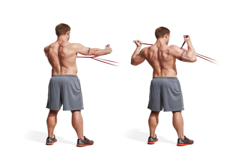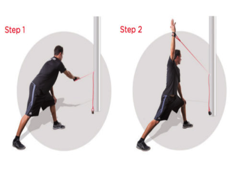 For this edition of the injury prevention blog, I wanted to address one of the most common questions that I hear when I speak with coaches, players, and parents. I am often asked: “What do you think about weighted ball throwing programs?” “Will throwing a weighted ball help to increase throwing velocity?” This is a topic that has been debated by physical therapists, athletic trainers, strength trainers, and pitching coaches for years. There have been several research articles written about the topic, the most recent of which, the “Effect of a 6-week weighted baseball throwing program on pitch velocity, pitching arm biomechanics, passive range of motion, and injury rates”, written by Mike Reinold, PT, DPT and Dr James Andrews sheds some interesting light on the subject. Since all players are desperately trying to throw harder, there are many programs, web sites, and theories out there that have tried to find the secret. One such theory is that throwing a heavier ball will strengthen the arm and then allow the player to throw a standard weight baseball even harder. The research on this has been mixed at best. This recent study cited above compared 2 groups of teenager baseball players that threw weighted balls in addition to strengthening and routine baseball activities with another that threw only standard weight baseballs. The key results were that the weighted ball group had:
So how does a player throw harder? The answer is to learn to better use the entire body. The legs produce the force, the trunk transfers the force, and the arm just delivers the ball. Therefore, the stronger the lower half and the more stable the trunk and core, the harder that a player will throw. There is no secret weapon out there that substitutes for a stronger kinetic chain and proper throwing mechanics. In addition, some of the tools that players use may actually lead to an increased risk of injury. For questions or comments or to submit requests for other topics, please email SportsPT@inova.org
1 Comment

So, what should be done to prevent a SLAP tear? There are many factors that contribute to tears of throwing shoulders including taking ample time off, having efficient mechanics and good use of the lower body and core, etc. The most important muscles to keep strong and healthy are the posterior rotator cuff muscles. The stronger that the cuff is, the better that the ball of the shoulder (humeral head) will be held in the socket and the less likely that it will peel back the top of the labrum. Two important exercises to include are external rotations (“W”) and reverse throws. In both cases, the emphasis should be on slow control of the exercises, especially in the return to starting position (eccentric strengthening). “W” exercise: Holding a band at shoulder height, pull the bands back into external rotation without arching your back. Slowly return to the starting position. Reverse throws: starting in a lunge position, pull back into a wind-up position (can vary based on normal arm slot) and then slowly return to starting position. The return should be done in slow motion and should be about 1/3rd the speed of the pull back. |
Dr. Seth BleeSeth is the Senior Director for Inova Physical Therapy Centers with oversight of 20 outpatient clinics in Northern Virginia. He graduated from Boston College's pre-medical program with a BS in philosophy. He then went on to physical therapy school and graduated with honors from Columbia University in New York with a Master’s of Science in Physical Therapy in 1998. Since graduating, Seth has worked with several different patient populations, but has focused the majority of his time in orthopedics and Sports. Seth is also certified in Sportsmetrics for injury prevention, trigger point dry needling, and Blood Flow Restriction therapy. Seth is a Certified Strength and Conditioning Specialist, which he integrates into his treatment of athletes of all ages. In addition to his clinical hours and his teaching and residency hours, Seth joined the medical staff of the Washington Nationals as their Lead Team Physical Therapist in 2016. He has also treated professional football, basketball, hockey, lacrosse, and Inova Physical Therapy Center- Sports Medicine Clinic soccer players and became the Team Physical Therapist for the NWSL (National Women’s Soccer League) Washington Spirit in 2020 as well. He has done multiple podcasts discussing rehab in professional sports and has been on ESPN as part of the E60 Project 11 program.
ArchivesCategories
All
|






 RSS Feed
RSS Feed
